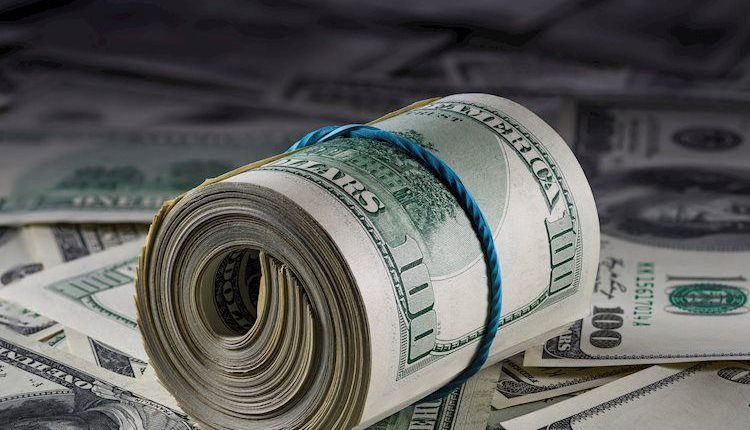- The Greenback pulls back after sources mention a ceasefire deal is speeding up between Israel and Palestina.
- US yields sunk lower after attempting to soar back to 5% on Thursday.
- The US Dollar Index is set to lock in a fresh weekly gain.
The US Dollar (USD) had a wild ride again on Thursday as the European Central Bank turned out to be a non-event. Rather the wild ride in the US equity markets thereafter made the US Dollar Index (DXY) pull back. The sell-off in US equities, with the Nasdaq leading the decline, saw investors flee to safe havens such as US bonds.
On the economic data front the focal point this Friday is the Personal Consumption Expenditures Index. Both the monthly change and the change against last year were both in line as expected, with no surprises that could mean difficulties for the Federal Reserve. So smooth sailing for the Greenback towards the Fed meeting next week.
Daily digest: US Dollar clings on to weekly gains
- Biggest data point for this Friday were the Personal Consumption Expenditures Index
- The Core monthly Price Index went from 0.1% to 0.3%.
- The Core yearly Price Index printed a move from 3.8% to 3.7%.
- The Overall monthly Price Index went from 0.4% to 0.4%.
- The Overall yearly Price Index headed from 3.4% to 3.4%.
- Personal Income for September went from 0.4% to 0.3%.
- Personal Spending for September is to head from 0.4% to 0.7%.
- Near 14:00 the last data point for this week is expected with the Michigan Consumer Sentiment Index for October
- Consumer Sentiment is expected to stay steady near 63.
- The Consumer inflation expectation is to stay near 3%.
- Equities are in the green as investors are picking up the pieces from the steep decline on Thursday. In Asia the Hang Seng is up 2%. Europe remains sidelined as is set to close this Friday flat. US equity futures are seeing Nasdaq futures up 1%.
- The CME Group’s FedWatch Tool shows that markets are pricing in a 99.4% chance that the Federal Reserve will keep interest rates unchanged at its meeting in November.
- The benchmark 10-year US Treasury yield trades at 4.88%, retreating a bit further as markets are heading into safe haven assets after the steep decline from US tech stocks overnight.
US Dollar Index technical analysis: US Dollar eases on ceasefire safe haven outflow
The US Dollar is trading in the green for this week, although a rejection on the topside on Thursday might see those weekly profits getting a touch smaller. The rejection came after the US Dollar Index (DXY) peaked on the back of a snooze fest ECB meeting. Do not expect a full paring back, though a very firm rally in the DXY is neither anticipated, ahead of the Federal Reserve meeting next week.
The DXY has consolidated above 106.00 and looks to keep stretching higher. Line in the sand is 106.84 that has triggered a rejection on the topside. Once broken through there, the high of October at 107.35 comes into play for a retest.
On the downside, the recent resistance at 105.88 did not do a good job supporting any downturn and now completely has lost its importance. Instead, look for 105.12, which is a pivotal historic line and almost falls in line with the 55-day Simple Moving Average (SMA) to keep the DXY above 105.00, and which worked already quite ahead of it on Tuesday. Should this level fail to do the trick, a big air pocket could develop and see the DXY drop to 103.74, near the 100-day SMA, before finding ample support.
Risk sentiment FAQs
In the world of financial jargon the two widely used terms “risk-on” and “risk off” refer to the level of risk that investors are willing to stomach during the period referenced. In a “risk-on” market, investors are optimistic about the future and more willing to buy risky assets. In a “risk-off” market investors start to ‘play it safe’ because they are worried about the future, and therefore buy less risky assets that are more certain of bringing a return, even if it is relatively modest.
Typically, during periods of “risk-on”, stock markets will rise, most commodities – except Gold – will also gain in value, since they benefit from a positive growth outlook. The currencies of nations that are heavy commodity exporters strengthen because of increased demand, and Cryptocurrencies rise. In a “risk-off” market, Bonds go up – especially major government Bonds – Gold shines, and safe-haven currencies such as the Japanese Yen, Swiss Franc and US Dollar all benefit.
The Australian Dollar (AUD), the Canadian Dollar (CAD), the New Zealand Dollar (NZD) and minor FX like the Ruble (RUB) and the South African Rand (ZAR), all tend to rise in markets that are “risk-on”. This is because the economies of these currencies are heavily reliant on commodity exports for growth, and commodities tend to rise in price during risk-on periods. This is because investors foresee greater demand for raw materials in the future due to heightened economic activity.
The major currencies that tend to rise during periods of “risk-off” are the US Dollar (USD), the Japanese Yen (JPY) and the Swiss Franc (CHF). The US Dollar, because it is the world’s reserve currency, and because in times of crisis investors buy US government debt, which is seen as safe because the largest economy in the world is unlikely to default. The Yen, from increased demand for Japanese government bonds, because a high proportion are held by domestic investors who are unlikely to dump them – even in a crisis. The Swiss Franc, because strict Swiss banking laws offer investors enhanced capital protection.
Read the full article here

